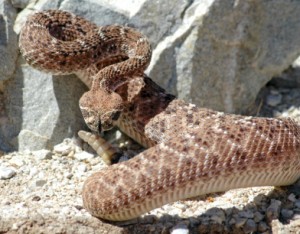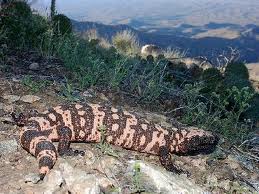 The desert, specifically in the summer months, is a tough place to find yourself stranded. In Arizona, Nevada and parts of New Mexico, temperatures can reach upwards of 120 degrees. In this kind of heat, you’ll need to take certain necessary and life saving precautions in order to survive in the desert.
The desert, specifically in the summer months, is a tough place to find yourself stranded. In Arizona, Nevada and parts of New Mexico, temperatures can reach upwards of 120 degrees. In this kind of heat, you’ll need to take certain necessary and life saving precautions in order to survive in the desert.
Desert Survival Tip #1
Stay out of the sun! As mentioned above, temperatures can sky rocket in the summer months during the day. Find some sort of shelter to shield yourself from it’s rays. Ideas for shelter can include the shady side of a wash or underneath a rock overhang. In certain areas of the American desert, you’ll find Mesquite trees, Yucca plans or Saguaro cactus that can provide enough shade to escape the sun. Stay out of the sun as much as you possibly can during the day.
Desert Survival Tip #2
Do all your work and traveling at night. If you find a need to construct a better shelter, do it at night. You’ll not only preserve your body fluids, but you’ll also have more energy. Temperatures in the desert can change thirty degrees from day to night. You will get more accomplished in the dark than you ever will in the sun and heat of the day.
Desert Survival Tip #3
 Find water! We’ve all seen the movies. We should all know that you can get moisture from certain types of cactus. In the American desert, I would recommend Prickly Pear cactus and Barrel cactus. The only precaution to take with cactus, are the thorns. Not just the long ones that can easily be seen, it’s the tiny little splinter like thorns that will be your worst nightmare if gotten into. They are so small, you’ll need tweezers to remove them. And they come by the tens and hundreds.
Find water! We’ve all seen the movies. We should all know that you can get moisture from certain types of cactus. In the American desert, I would recommend Prickly Pear cactus and Barrel cactus. The only precaution to take with cactus, are the thorns. Not just the long ones that can easily be seen, it’s the tiny little splinter like thorns that will be your worst nightmare if gotten into. They are so small, you’ll need tweezers to remove them. And they come by the tens and hundreds.
What you’re looking for in a Prickly Pear, is the red part that looks like a purple oval shaped plum. It’s extremely tasty. If you’ve ever been to Arizona, you might have had “Prickly Pear Jelly” on your toast. It’s to die for….but not while stranded in the desert. When removing it from the cactus, don’t grab it with your hand. Use a sharp stick or a knife if you have one. You can burn the thorns off the outside and then peel the skin off. The inside is what you want to eat.
 Barrel cactus is a short round cactus that can grow several feet tall. With a barrel cactus, you’ll just want to cut several inches off the top to expose the insides. You’ll find a hearty, moist meat inside similar to the color of Honeydew, but it’s not going to be sweet.
Barrel cactus is a short round cactus that can grow several feet tall. With a barrel cactus, you’ll just want to cut several inches off the top to expose the insides. You’ll find a hearty, moist meat inside similar to the color of Honeydew, but it’s not going to be sweet.
There are also various rigs you can setup that will allow you to collect moisture as it evaporates with the extreme heat. But we’ll save that for another article. At times, you can find water in washes or in rocky areas (if it’s rained recently). Don’t go searching for an oasis, you’d be wasting your time.
Desert Survival Tip #4
The dangers of the American desert.
 Rattlesnakes – Also known as the Diamondback Rattlesnake. It’s dangerous. It’s venom, if bitten, will corrode your flesh. If you fall victim to a snake bite, get proper medical care within thirty minutes or amputation or death may occur. At times, it will rattle is rattlers when it is alarmed, but don’t depend on this to happen every time. They don’t always rattle and some of the smaller ones, the more dangerous ones, haven’t fully developed their rattlers yet. Some tips about rattlesnakes: When they aren’t coiled up, they can strike about half of their body length….and they’re fast. Don’t think you’re faster. You’re not. When coiled up, they can strike further. But if you think you can kill the snake, it’s a great source of meat, and the skin can be used to collect water. I know it sounds gross, but if you have nothing else to collect water with, it will do the job.
Rattlesnakes – Also known as the Diamondback Rattlesnake. It’s dangerous. It’s venom, if bitten, will corrode your flesh. If you fall victim to a snake bite, get proper medical care within thirty minutes or amputation or death may occur. At times, it will rattle is rattlers when it is alarmed, but don’t depend on this to happen every time. They don’t always rattle and some of the smaller ones, the more dangerous ones, haven’t fully developed their rattlers yet. Some tips about rattlesnakes: When they aren’t coiled up, they can strike about half of their body length….and they’re fast. Don’t think you’re faster. You’re not. When coiled up, they can strike further. But if you think you can kill the snake, it’s a great source of meat, and the skin can be used to collect water. I know it sounds gross, but if you have nothing else to collect water with, it will do the job.- Spiders are abundant in certain areas. They need water to survive as well. So watch for critters when you’re near water. Most Tarantulas you see in the American desert aren’t dangerous. They bite alright, but their venom is meant to stun their prey and isn’t potent enough to stun a person. Black Widows are also found in the desert and everyone knows the effects if bitten. You will most likely see Wolf Spiders, which are large, grey, hairy spiders that are extremely quick. They bite but are harmless.
 Scorpions – Rule of thumb, if you’re bitten by anything poisonous, the smaller it is, the worse it will be. They don’t know when to shut off the venom. In the case of a scorpion, you’re stung, not bitten. It’s their tail you have to watch out for, not their pinchers. However, unless you’re allergic to scorpion venom, you’ll recover. You may experience numbness and some aching, but you’ll recover fully in a week or two. If you have Benadryl, take it. It will help.
Scorpions – Rule of thumb, if you’re bitten by anything poisonous, the smaller it is, the worse it will be. They don’t know when to shut off the venom. In the case of a scorpion, you’re stung, not bitten. It’s their tail you have to watch out for, not their pinchers. However, unless you’re allergic to scorpion venom, you’ll recover. You may experience numbness and some aching, but you’ll recover fully in a week or two. If you have Benadryl, take it. It will help.- Coyotes live in the desert as well but will run at the site of you. They are more scavengers than they are hunters. I wouldn’t worry about them too much. If you feel more comfortable, fire will keep most animals away at night.
In the desert, just be sure to shake out your shoes or clothing items before putting them back on. Scorpions and spiders love to hang out in moist shoes.
Desert Survival Tip #5
 Food is scarce. As I mentioned earlier, snakes are a great source of meat. I wouldn’t really attempt to chase down a rabbit. They’re just too quick. However, if you have a pistol, rifle or bow and arrow, you will have yourself a good meal. You may also run into prairie dogs, gophers and other smaller animals. There are always Quail and Dove in the desert which can provide good meat. There are also many types of lizards and insects you can eat. The only poisonous lizard in the desert is the Gila Monster. It’s mostly black with yellow or orange blotchy colors across it’s back. I would just steer clear if you run into a Gila Monster. They’re not worth the effort.
Food is scarce. As I mentioned earlier, snakes are a great source of meat. I wouldn’t really attempt to chase down a rabbit. They’re just too quick. However, if you have a pistol, rifle or bow and arrow, you will have yourself a good meal. You may also run into prairie dogs, gophers and other smaller animals. There are always Quail and Dove in the desert which can provide good meat. There are also many types of lizards and insects you can eat. The only poisonous lizard in the desert is the Gila Monster. It’s mostly black with yellow or orange blotchy colors across it’s back. I would just steer clear if you run into a Gila Monster. They’re not worth the effort.
Desert Survival Tip #6
This is more of a “Just in case” tip. Before you leave on any trip, make sure someone knows of your plans. If you find yourself stranded in the desert, and don’t know where you are, stay put. If you know where you are, travel at night. You’ll be able to travel ten times the distance in the cooler temperatures. Put together a “72 Hour Kit” and keep it in your car. There will be more information coming in a future article on the items to include in a kit. And most importantly, don’t panic. Keep your head on straight and use your head. Making mistakes in the desert can cost you your life.

One reply on “How to Survive in the Desert”
Great info.something everyone needs to review before driving out or hiking in the desert